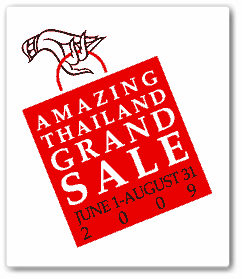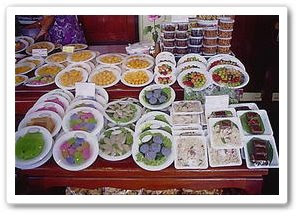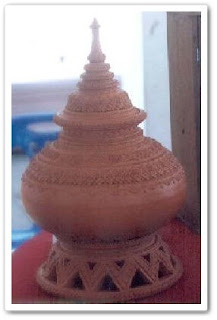Venue : Department stores, hotels, restaurants, and tourist attraction nationwide
 Thailand’s annual “Amazing Thailand Grand Sale” got underway this month and continues to offer visitors great bargains right through to 31 August.
Thailand’s annual “Amazing Thailand Grand Sale” got underway this month and continues to offer visitors great bargains right through to 31 August.This year, as fuel prices escalate, both visitors and residents are looking for more value and bigger discounts when they are shopping. Thailand never disappoints. Most mega stores and shopping malls are offering discounts of between 10 to 70%, so there are bargains galore for the shopper prepared to browse around the stores.
Fortunately, most of Bangkok’s major shopping malls and stores are located close to the city’s skytrain or metro transport systems, making it very convenient to hop from one store to the next. Both the Skytrain and the Metro, offer day use stored-value cards for visitors to make it even more convenient to use the two systems.
Bangkok’s main shopping districts and streets are to be found along Ploenchit and Sukhumvit roads. Many of the department stores have direct bridge linking them to Skytrain stations. Just a short walk from the Skytrain stations and visitors discover some pretty impressive department stores and shopping plazas namely Siam Discovery Centre, Siam Centre, Central World Plaza, Erawan Bangkok, Amarin Plaza, Gaysorn, Central Chidlom, Home Pro Plus, Robinson Department Store, The Emporium and The Mall Department Store.
Discounts are also available in King Power duty free shops, both at Suvarnabhumi Airport and downtown locations. There are even discount deals on luxury treatments at spas, a round of golf at a selection of courses at all major tourist destinations, travel packages and even medical check-ups at world-class hospitals.
The three-month campaign also embraces a variety of destinations beyond Bangkok such as Chiang Mai, Chiang Rai, Hua Hin, Cha-am, Pattaya, Nakhon Ratchasima, Udorn Thani, Phuket, Krabi, Hat Yai and Samui Island.
Grand Sale prizes are offered in conjunction with the campaign sponsor, Visa Card, and include bargain holiday packages to premier destinations such as Phuket and Samui.
Contact : Tourism Investment Department, Tourism Authority of Thailand
Tel : 66 (0) 2250 5500 ext. 2951
Credit : http://www.tourismthailand.org Read More...





